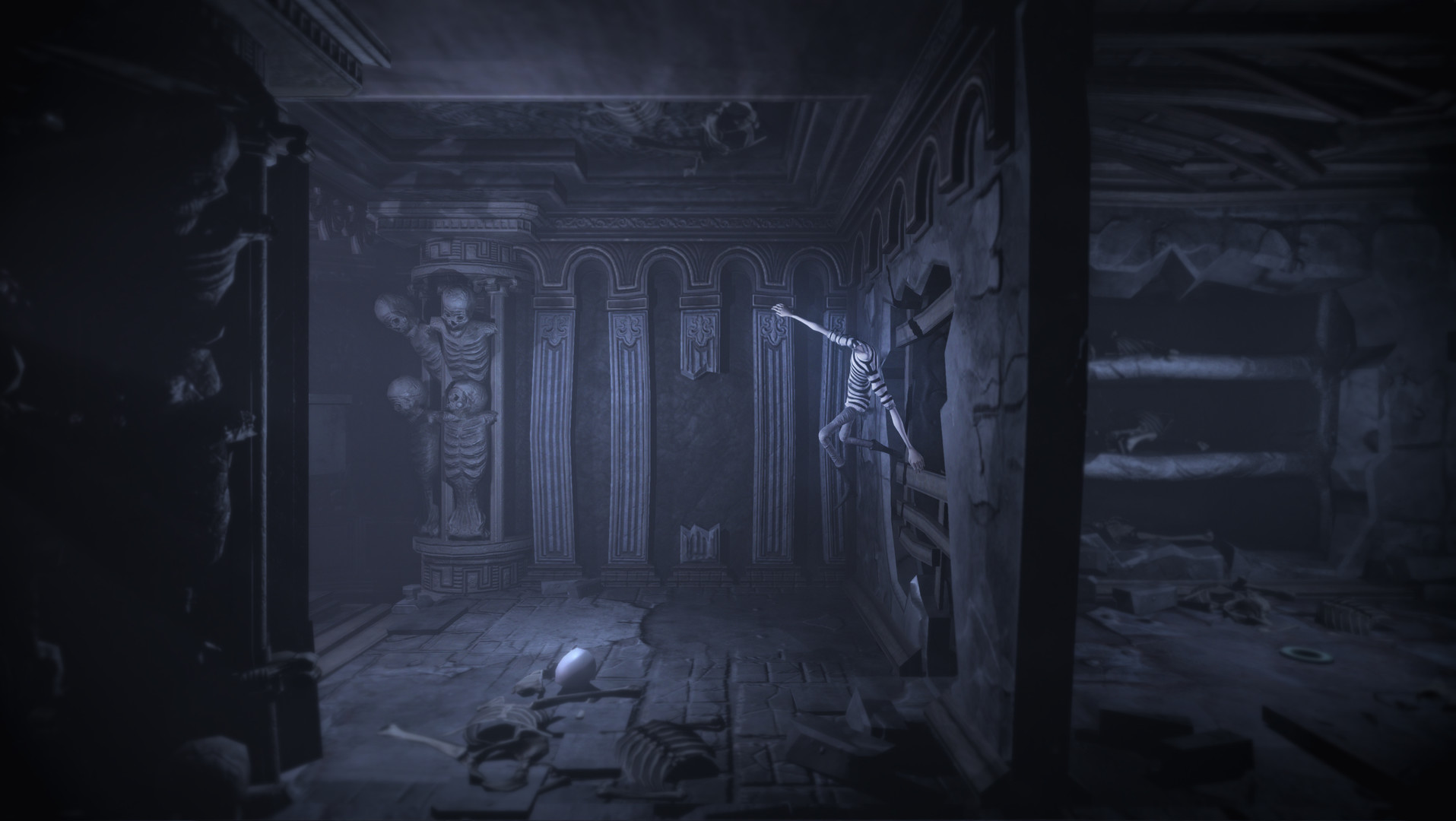

While the puzzles are generally satisfying, there were some occasions where I was just getting frustrated, and the eventual solution was so obscure or required way too much speed and accuracy with a control scheme not built for it. One standout for me was a street level where I simply could not progress until I realised that I was missing a contraption at the literal centre of the world that changed how the whole thing worked. The first world has you collecting gears to get a door open, which seems pretty standard stuff, then the second level just says “Nah, bored with gears now, let’s try something new” and it means each level has it’s own distinct identity. Each level is a small, self contained world, and you may have to explore a large amount of it to be able to solve the first in the chain of puzzles that lead to your escape. Sometimes the puzzles are simple “put x here” style puzzles, but more often than not they require a lot of exploration, experimentation and use of the weird physics of the world. And boy, it delivers on that front with a mix of real head scratchers and dexterity based conundrums that really had me stumped at times. Which is all well and good for the mechanics, but they are all just a framework for what this game really is, a puzzler. Later levels introduce a “jump in, jump out” mechanic where Lloyd can move to another plane and he can shift parts of levels by rotating and swapping them, the world of his dreams is very malleable. Its takes a while to get your head around, but becomes second nature as you progress. He can do this on any flat surface, so each room you encounter has the possibility to be explored in 4 different perspectives, which makes the puzzling a lot tougher to figure out. It took me a few minutes to stumble across one of the games main hooks, Lloyd can shift his gravity, and walk on walls, turning the whole scene 90 degrees. Lloyd walks on a 2D plane, can interact with objects that are next to him, pick things up that go into an inventory, and that’s about it. You will see a prompt when you can interact with an object, but how that interaction takes place is not always clear. There is no tutorial, and no hand holding.

The same sense of discovery takes place with the controls. There are hints scattered around thoughout, in terms of repeating sounds through levels, some connected visuals and themes, but it’s up to you as to how you think it all fits together. The story is left very much to the player to interpret, there is zero dialogue in the game, and only some secret Dream Journals to find, which obviously stress the fact that Lloyd is asleep, but they add nothing to the plot. I say presumably, because very little is explained in Darq, and that’s not a bad thing. At this point, he literally has an out of body experience and is presumably transported to some nightmare world of his sleep where he needs to try and escape. You play as Lloyd, who starts the game in his rundown house, and the only thing he can do is go to bed.


Darq looks at first glance like a surreal, creepy horror game in the same vein as Limbo and Inside, but at it’s heart it is really an intricate puzzler wrapped up in a dark art style with some nasty scares in there to keep you on your toes.


 0 kommentar(er)
0 kommentar(er)
